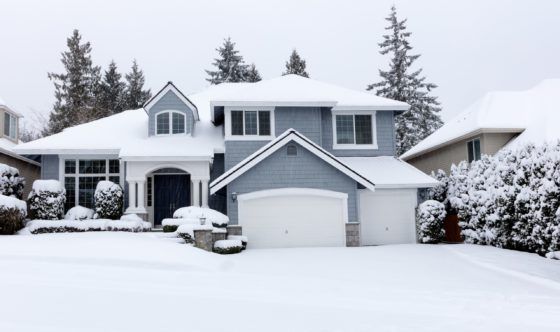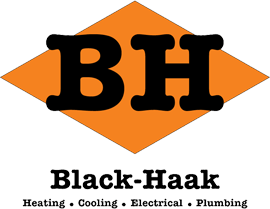
It never seems to fail that it’s always during the worst winter storms around Fox Valley when HVAC systems tend to falter and break down. While you may not always know when one of these storms will hit, you can still have your HVAC system ready for the eventuality. Here are some of the best ways to prepare your HVAC system now for when the winter storms arrive.
Why Winter Storms Cause Problems With Your HVAC System
Before jumping into the specific ways to prepare, it’s helpful to know why storms cause problems. This allows you to appreciate how each of these tasks can affect your furnace’s winter readiness.
Your heating system works by raising the temperature of your home’s air as it circulates through the furnace. This warmer air then moves out into your residence to increase the overall indoor temperature as the hot air mixes with the cooler air.
Winter storms typically have two components that pose challenges. First, the storms often come with cold fronts, which probe and try to defeat the insulation of your house. Second, the winds that come with these storms severely accentuate any heating leaks your property may have.
Both the lower temperatures and the wind mean your home will naturally transfer more heat from inside your walls to outside them. The result is the air inside cooling down more quickly than it would during milder weather.
Your system then has to run longer heating cycles more often to try to keep your house warm. This combination not only burns more fuel, but it also adds strain to your system. This can be the final straw for a unit that’s old or already compromised.
Problems That Compound Winter Weather
There are many factors that may exert strain on your HVAC system before the bad weather arrives. Then, when the storms hit, your system can’t stand up to the harsh conditions.
One of the most common strains for heating systems is airflow restriction. When your furnace can’t circulate enough air, it causes the system to retain heat. This can damage many internal components and lead to various failures.
Another common strain is weakness from naturally aging components that aren’t functioning optimally. When one component doesn’t work properly, it adds stress to the entire system as it tries to compensate. This leads to other parts failing when the system is bogged down during intense weather. Fortunately, there are some tasks you can easily perform to reduce the operational strain during normal periods.
Check Your Furnace Filter
The very first thing to do is keep a close eye on your furnace filter, which is the most common and significant source of restricted airflow. The common types of filters should be changed once about every 90 days. However, during the drier Wisconsin winters, you may need to change them a little more often.
Plan to check your filter monthly to see how much dust it’s collecting. This allows you to change it when it’s obviously getting clogged and before it can put additional strain on your system. While checking your filter each month, gently vacuum off the intake side to help keep more air flowing through it between changes.
Manage Vents and Doors
Your unit needs to circulate air throughout your house to evenly and effectively warm the entire space. It does this by creating high pressure at the output vents, which then pushes toward the low pressure at the return vent.
You want to keep these vents open to provide enough high-pressure outputs throughout your home. Be sure to keep the interior doors open as well, allowing the air to flow from room to room for even heating. Closing vents in areas you don’t want to heat only causes air throughout the entire house to struggle in attaining the right temperature, leading to more frequent cycling of the equipment, which equals more strain.
Although there’s a great temptation to close vents and doors in unused rooms, this is a serious mistake. It simply forces more air through other ducts, consequently making the heater work much harder
Schedule Furnace Maintenance
Aside from your furnace filter, your heater may develop airflow restrictions at the heat exchanger and circulating fan. This naturally happens when particles small enough to flow through your filter enter your unit.
During furnace maintenance, a technician gently cleans these areas, keeping air moving freely through the system. The technician also tests components to ensure they’re functioning within optimal parameters. If they’re found to be faulty, the maintenance call affords an opportunity to correct the situation before peak usage can exacerbate it. Without proper maintenance, you probably wouldn’t know there was an issue until it posed a major problem. If you’re located in Fox Valley or the surrounding area, our experts from Black-Haak can perform a tune-up for you.
Tend to Your Home’s Humidity
Air quality is critical to managing your heating system’s strain. Poor air quality leads to more contaminants clogging your filter and entering your system, creating additional restrictions.
Humidity is a critical aspect of managing air quality. When indoor air dries out due to the outdoor temperatures cooling and the furnace running constantly, airborne contaminants become lighter and stay airborne longer. Consider adding a humidifier to your house to keep your relative humidity within the EPA’s recommended 30% to 50% range.
Solve Small Problems
As we’ve already mentioned, small problems may have substantial impacts on your heating system. While maintenance will uncover any minor issues at the time of the visit, your furnace will give subtle signs of problems throughout the season.
You may notice that it feels as if less air is flowing from your vents while the heating system runs or that the air isn’t as warm as you remember it being. You may also notice a rattling or squealing sound when your furnace first starts. It could be that it seems as though your heating cycles are lasting longer than usual.
All of these are subtle indicators that something isn’t working properly. For some of them, it may be as simple as changing your furnace filter. However, if that doesn’t solve the problem, call your technician to get to the root cause before the intense winter weather hits. Dealing with these problems early shortens the extra strain on your heater, preventing damage that may cause it to fail during bitter weather.
Set Up Thermostat Programs
If you keep your thermostat at the same temperature all day, you increase the burden on your system without experiencing any benefit. You can reduce your heating bills and the frequency of repairs by lowering your home’s temperature up to 10 degrees while you’re not there. According to the EPA, you can save up to 10% of your heating bill if you implement this reduction for at least eight hours each day.
When you lower the temperature, you reduce the length and frequency of your heating cycles. All of this means you reduce the duration of operational strain, so the system is stronger during extreme weather.
People around Fox Valley have turned to Black-Haak to keep their families safe and comfortable since 1956. The professionals on our team provide expert heating system services, cooling services, and indoor air quality services, not to mention a full range of plumbing and electrical services. Call us today to schedule your furnace maintenance or any other home comfort service.

